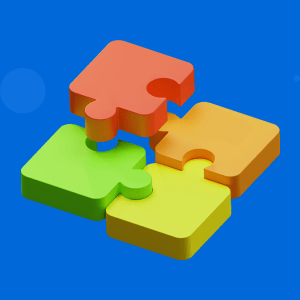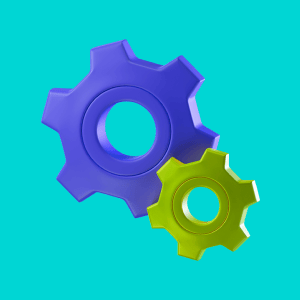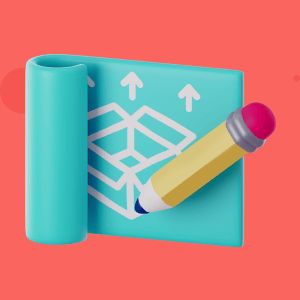Customer training
Table of Contents
It’s no secret that employee onboarding and continuous training are critical for your business.
Ditto for product training aimed at sales reps.
But, there’s a whole group that many companies seem to forget when it comes to training.
It’s your customers!
Products are more complex than ever, while attention spans are rapidly shrinking.
So, customer training is the way to go.
It gives your customers everything they need to use your product well, ensuring they are satisfied and loyal. At the same time, it reduces churn rates and drives product adoption.
Sounds too good to be true, right? It’s not. Stick with us, and we’ll explain why.
You’ll also discover:
- The main benefits of customer training
- The steps to create a successful customer training program
It’s time to dive right into it!
What is customer training?
Customer training is the process of educating customers on how to best use a product or service to meet their goals.
It’s part of what’s called extended enterprise enablement, which refers to learning and development initiatives aimed at outside stakeholders, such as partners and customers.
Customer training programs, the good ones at least, go beyond just providing information. They are a chance to forge a relationship with customers, which can eventually turn them into brand advocates.
Customer training has a positive effect on consumer satisfaction and retention.
It’s all about providing the best customer experience. Typically owned by the customer success team, this training usually takes place online through webinars, e-learning courses, and other learning activities.
All companies should pursue customer training programs because of the benefits (more on them later), but they are especially important for IT companies whose products are often very complex.
Product complexity often leads to more churn, lower adoption rates, and finally fewer profits.
This is why customer training is so crucial during new customer onboarding. If a new customer feels overwhelmed by poorly explained functionality, they are likely to stop using a product.
That’d be bad. Upselling and renewals generate 70% to 90% of SaaS profits, so it would be even worse to miss out on those.
In the next section, we’ll take a look at a few important benefits that customer training programs offer to companies.
5 benefits of customer training you should know
To be completely frank, you can’t build a customer training program overnight.
It’s an investment, and depending on your needs, it can be quite a significant one.
But, if you want to satisfy your customers’ needs while boosting customer loyalty, you’ll need to commit to customer training.
What’s in it for you, you might ask?
Read on to find out.
Benefit #1: Improved customer satisfaction
Even if your new (or existing) product is the best thing since sliced bread, it can still flop pretty hard if nobody uses it. Product adoption is a pain point for many organizations.
Simply put, for your customer to get some value from your product, they first need to understand how to use it.
That’s where customer onboarding comes in. It’s the most important time in the customer life cycle because that’s where you make your first impression.
And you know the trouble with those—you only get to make one.
So make it an engaging and comprehensive customer training program that will empower your new customers to start seeing value in your product very fast.
Customer training isn’t just for the onboarding process, though. It’s also a great tool for customer prospecting. Prospective customers can start learning about the benefits of your product or service before they decide to buy.
All in all, customer training is important to the customer experience. The better it is, the more satisfied the customers will be. Customer satisfaction is all about perceiving a product as valuable, and your users can’t do that if they don’t know how to use it.
Benefit #2: More customer loyalty
What is a loyal customer?
It’s a customer that has an ongoing positive relationship with your organization and product. They are brand loyalists who are willing to engage with your product and repeat purchases from your company.
But how do you get there?
Product quality, great customer support, and the right CX tools to deliver a fabulous user experience.
Your customer training program targets the last one of these.
This is because loyal customers will be your mature customers. The ones who have a good amount of product knowledge and have been using it for a while to address their needs.
Customer training is the path to getting to that stage in the user journey.
Training sessions don’t just show off the product. They’re a chance to forge a connection and show your customers you’re invested in their success.
The sooner your customers understand product features through tutorials and training courses, the sooner they can engage with it on their own.
Then it’s up to the product quality as well as your customer service team.
The end goal is to have loyal customers who will be your brand advocates. The first step is customer training.
Benefit #3: Higher retention and lower churn
Unless your company makes butter, churn is not a good thing.
Customer churn specifically refers to consumers who stop using your product. Most often, the reason is a lack of satisfaction with the product and customer service.
Customer retention strategies prevent this.
A somewhat overlooked way to boost customer retention is through customer training and customer education.
Why does this work?
Implementing a customer training program means that you’re offering your customer base the knowledge they need to use your product to its full potential. So your users can address different pain points and make the product a part of their workflow.
The more entrenched customers are in your ecosystem, the less likely they’ll leave it. Just look at Apple with their crazy high retention rates.
Or, consider this study by the inventors of the net promoter score. It reveals an increase in customer retention of just 5% translates into 25% more profits.
With these metrics, it’s clear why you’d want to do anything it takes to retain customers.
We think that ‘anything’ should include investing in training materials for your customers to keep them informed, looked after, and loyal. If you do that, the customers retain themselves.
Benefit #4: More word-of-mouth advertising
Word-of-mouth is the golden standard of brand awareness. Ask anyone involved in marketing or advertising.
Why? Well, who would you trust more: a colleague recommending a cool new app or some random Google ad? Exactly.
Don’t just take our word for it, though. We’ve got stats to back it up.
Word-of-mouth drives $6 trillion of consumer spending annually, and advertising impressions from word-of-mouth bring in five times the sales compared to paid advertising.
This is one of the links between customer training programs and increased profitability.
With enough training, loyal customers that truly understand the product and its use cases eventually become brand evangelists. In turn, they spread the gospel of your cool product in person and on social media.
Customer training is a necessary step on the way to creating brand ambassadors. Customers who don’t have a lot of product knowledge can’t effectively give referrals to others.
Benefit #5: Better chances of upselling
We cited an important stat earlier, and it’s so important we’ll say it again.
SaaS companies generate 70% to 90% of their profits through upselling and renewals.
Your loyal and satisfied customers are the lifeblood of your company. After all, it’s generally easier to keep a customer than to acquire a new one.
To be able to upsell effectively, you need to have a customer base to upsell to. If your retention rates are low, you can’t convince as many customers to pay a bit more for an upgrade or a new feature.
Similarly, if product knowledge is low, your existing customer base may not even understand why a new feature or a better service tier is worth their money.
All of this is why customer training is not just about cutting support costs and having fewer support tickets.
It does all that, sure. But it also helps you achieve your business goals by nurturing a loyal customer that understands your product and finds real value in it.
Next up, we break down the steps you need to take to create a successful customer training program.
6 steps to create a successful customer training program
By this stage, we’re all clear on the benefits of customer training programs.
So, now it’s time to show you how to build one.
First off, you’ll need a good Learning Management System (LMS) to deliver your training program. If you have already invested in learning and development to help you with transition and change, you probably already use an LMS.
If not, get one. Customer training is so much easier when you do it through online training, tutorials, and blogs than when you have to get your customers to an in-person training session.
Plus, an LMS allows you to track key data and measure the impact of your training program (more on that later).
Step #1: Learn more about your customer
Before you set out to design learning experiences that make up your customer training program, you’ll have to learn a bit about your customers.
The goal of your customer education program is to give the customers what they need to use the product correctly. So designing it starts with identifying your customers’ needs.
The best way to do this is by surveying your existing customers and, if you can swing it, getting feedback from those that have stopped using your product.
You can conduct surveys to gather this information. In-person and one-on-one interviews with a few customers are a good follow-up to the general surveys.
Your surveys should focus on your ideal customers, the people who receive the most value out of your product and who’d recommend it to others.
At this stage, it’s all about identifying the training needs of your customers.
Which parts of the product do they have the most trouble with? What knowledge do they wish they had? What are their desired outcomes?
When you can answer these questions, you’ll be ready to start designing the learning materials to deliver through your training platform.
Step #2: Gather training content
Now that you know what your learners need to learn, it’s time to start assembling the training materials.
A good first step is to collect any training materials that already exist in your organization.
Reach out to your marketing, product, and customer service team. They most likely already have a lot of learning materials they developed to help customers achieve desired outcomes.
Identify any gaps that might exist between this material and the training materials you need to create.
An LMS is central to this process. It serves as the central repository of all the training activities in your company, not just customer education.
You can deliver training at scale, building tailored learning paths for different customer segments.
As part of the process of building a customer training program, you’ll have to set clear learning objectives. What do you want your customers to learn? What skills should they have, and how should their behavior change after they’re done with training?
Customer training materials and courses need to align with your brand values, style, and goals.
Your L&D team can support you in building an engaging and effective training program. Alternatively, you may want to consider hiring an instructional designer to create your customer education training resources.
Opting for a SCORM-compliant LMS means you can mix and match existing training modules into new online courses.
For instance, you can upload existing tutorial videos or instruction manuals in PDF form to your LMS and organize them into different modules that make up an e-learning course.
Additionally, you can purchase training materials from various vendors or through an integrated content marketplace.
Step #3: Leverage a mix of different learning methods
Different people learn differently. That’s according to the very influential learning styles theory. For instance, some people are interpersonal learners, while others learn better on their own.
The wonderful thing about LMS-delivered training programs is that they cater to different learning styles.
You can leverage a mix of learning methods to suit your desired learning outcomes and the customer’s needs.
No more need for in-person product demonstrations—have an online course instead. A webinar is great, but it might conflict with your learners’ other obligations. So, offer on-demand self-paced materials too.
Also, most of your customers have smartphones, so there’s no excuse not to add mobile learning to your customer training program.
Fostering a community of learners is very easy with an LMS. Set up discussion groups that allow messaging between learners. Now they can discuss things and connect.
On-demand learning has many benefits, but from time to time, a webinar or other synchronous learning event is the best option. At those times, you’ll be glad your LMS can integrate with a lot of great tools—from video conferencing to CRM software.
Cool features such as gamification, interactive quizzes, and microlearning content can make online learning engaging and even fun.
Step #4: Test and gather feedback
Iteration is an important part of creating any learning experience. So, don’t worry if the first version of your customer training program isn’t hitting all the metrics you want it to.
Test, gather feedback, optimize…
At the risk of sounding like a broken record, this is another thing that learning platforms can help you with.
LMSs have very powerful tracking capabilities. They can track learner progress, course completion rates, and performance.
Using these metrics, you can identify any shortcomings in your customer training program.
An important metric is content that customers end up not consuming. If there’s a course or a module that nobody is taking, it either needs reworking or scrapping.
Surveys and feedback are not just the first steps of creating a customer training program. You should do these all the time to get a feel for what your user base thinks of the training content.
An LMS can integrate these surveys into the courses. For instance, at the end of a course, have your learners fill out a short survey.
It’s essential to track all of these metrics because a training course that isn’t achieving the desired learning outcomes is a waste of time and resources.
Step #5: Provide support
A major goal of customer training programs is to lighten the load on your customer service team.
But not all of it. Your learners will still need support every step of the way. Make sure there’s someone to help with any doubts about how to use the online courses.
You wouldn’t want someone interested in your learning content to miss out just because of a technical issue.
Learners need support outside of just technical issues. They need to feel supported in their learning, so encourage them to ask questions via the LMS. For instance, Docebo’s Ask the Expert feature allows customers to ask in-house SMEs questions about the training topics and platform.
It’s also a great idea to give certifications of training completion. This builds confidence in the product itself and the customers’ knowledge of how to use it.
In addition, including gamification elements makes learning more engaging and rewarding. Achievements, levels, badges, etc., add flair to a learning experience and provide a sense of doing something worthwhile.
Yet another way to provide support is to have extra training materials for those who want to dive deeper. It’s easy to maintain a knowledge base or a glossary on your LMS for those who want a more thorough understanding of your product.
Step #6: Monitor results
Customer training is not a one-and-done kind of thing. You should be supporting your customers in their learning and in achieving their goals. You want training to be proactive, not reactive. This is the way to increase customer satisfaction and minimize churn.
LMS reporting gives you deep insight into how customers are reacting to the training, where they are struggling, and where they are switching off.
Monitoring the progress and engagement of your learners lets you identify good candidates for upselling. They’ll be those who are very engaged with your learning platform.
On the other hand, the customers that don’t engage at all are those at risk of churning. So, you can use LMS metrics to identify them and keep them in the fold with a customer retention strategy.
Now, it’s time to recap what we’ve learned.
Now over to you
The future of learning and development is bright, and so is the future of customer training. With so many benefits, it’s no wonder that so many companies are investing in it.
Reduce your customer churn, and increase customer loyalty, all the while positively impacting your bottom line.
There’s practically no downside to giving your customers the knowledge they need to use your product to its full potential.
A powerful LMS is the key to effective customer training. It allows you to deliver training at scale, engage customers, and measure training success.
Want to know more about the impact digital learning can have on your business? Head over to our glossary now.








